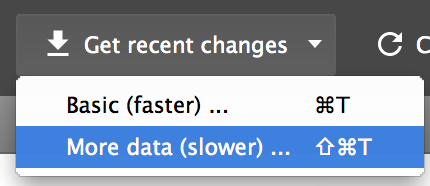With Customer Match beginning to explode in the RLSA world, advertisers are getting excited about Search Network retargeting capabilities. And rightfully so, as we’ve seen fantastic performance with the email list targeting now available in Google Adwords. We’ve used email lists in a multitude of ways. We’ve also seen great performance from regular remarketing lists on the Search Network, and through Analytics lists where we pinpoint engaged and unengaged users through pageviews and average time on site.
So, how do you go about getting RLSA efforts setup? Most set them up in their current campaigns first, and then implement bid modifiers in order to raise bids on top performing audiences. This is a fairly simple process, especially if you use AdWords Editor. Let’s review the process.
Step 1: Create your remarketing lists. As stated in the paragraph above, your lists can be emails, regular AdWords remarketing tactics or Analytics remarketing lists. The choice on how to segment your remarketing tactics is wide open with many possibilities.
Step 2: Download all of your remarketing lists into AdWords Editor by going into “Get recent changes” and selecting that dreaded “More data (slower)” option.
Step 3: Profit? Well, maybe. Now add all of the remarketing lists to your current Search campaigns and launch the changes through the Editor. To do this you’d go to “Keywords” and “targeting > Audiences > + Audience.”
Once this is all setup, you’ll be able to see data on these audiences across your account. And more than likely you’ll be pleased with the results. Therefore, you’ll be able to begin adding bid modifiers based on conversion rate or revenue/click data. In order to get data quickly, you can download the audiences through the interface and create pivot tables off the audiences to see how they are performing campaign-wide or even account-wide. Here’s a campaign-wide example.
Profit, indeed. As you can see, we decided to put heavy bid modifiers in these areas and this strategy helped to garner more traffic from these lists and allowed us to gain more revenue within our ROAS goals.
This is the part where I say ignore everything above, and let’s setup a different strategy around our RLSA efforts (I hope you weren’t doing implementations as you read). And here is why.
When doing keyword bid changes, we’re typically going to be looking at overall data. So, let’s put forth a situation where RLSAs are doing tremendous on one particular keyword as seen below.
We’re looking at the overall performance of a single keyword here. So, what we see when we go in to make the bid change is that this keyword is performing at a 176% ROAS. On the surface, it looks like it is time to raise bids. Let’s go ahead and raise the bid to $6 since we’re killing the 125% ROAS goal.
Our ROAS took a huge hit, but we’re still hitting the goal of 125%. What is noticeable is that conversion rates went from 18.33% to 14.18% as we raised the bid. When you look at this the way we should be, the bid should be going down, while the modifier is what we should be raising. But remember, we’re at the keyword level and imagine digging this far into the data for each keyword when conducting bid changes. So, again on the surface here, we’re seeing this keyword perform at a 130% ROAS. Let’s raise the bid a little bit to see if we can squeeze out some more revenue while remaining at the 125% ROAS.
As expected with the data we could see here, this strategy did not work. We are now below our ROAS goal. If you look at just the regular traffic coming through we are at a 62% ROAS. This data shows if these terms were separated into different campaigns, RLSA campaign & non-RLSA campaign, we’d be pulling bids back on the regular traffic on this keyword as we should have been.
As stated, it is possible to find the sweet spot by raising the modifier to the right spot and adjusting bids according to regular traffic. But 1) you’d have to do this type of research on each term, each time you make bid changes and 2) there are often situations where conversion rates fluctuate for regular traffic but not for RLSA traffic and vise versa. It is nice to have an easy way to see where the conversion rate dip is coming from at campaign-level.
As we visualize the data here we can tell in most instances it would be easier to manage when the RLSA efforts are put into their own campaign. The setup is easy, as detailed below.
Step 1: Copy each of your regular campaigns, and rename them by adding “_RLSA” or something along those lines that matches your naming convention.
Step 2: Add all of your remarketing lists to these campaigns ONLY.
Step 3: Profit? Again, possibly. But let’s make sure the ad group settings are correct first. In order to do so go to “Ad Groups > Flexible Reach > Choose Target and Bid.”
If you use “Bid Only here” it means you are using your remarketing lists only to adjust bids. With the selection of “Target and Bid,” we are showing that in this ad group the user has to be a part of the audiences we selected in order to see our ad. When we do this across an entire RLSA campaign we’re set with one campaign that only is used when users are part of the audiences we created. So let’s go ahead and look back into the previous situation at the keyword level when we have things segmented this way.
No modifiers are needed here so we’ll say the keyword when in the RLSA campaign was setup with a $10 bid, while the term without the lists was set with a $5 bid. The changes are dramatically different as we use a simple (Revenue/Click)/ROAS Goal formula to come up with our bid changes.
We will still have to keep in mind the different performance per list and adjust modifiers accordingly. But when doing keyword bid changes we now can visualize right away how keywords perform for new visitors rather than looking at everything together. If you are not running any RLSA, you’re still looking at everything together but do not have access to the data shown in the report above. This is why, even if you aren’t ready to bid differently per lists, I’d put your lists on each campaign so you can visualize performance differences. RLSA is an insanely helpful tool to use, and if used correctly can improve account-wide performance.









